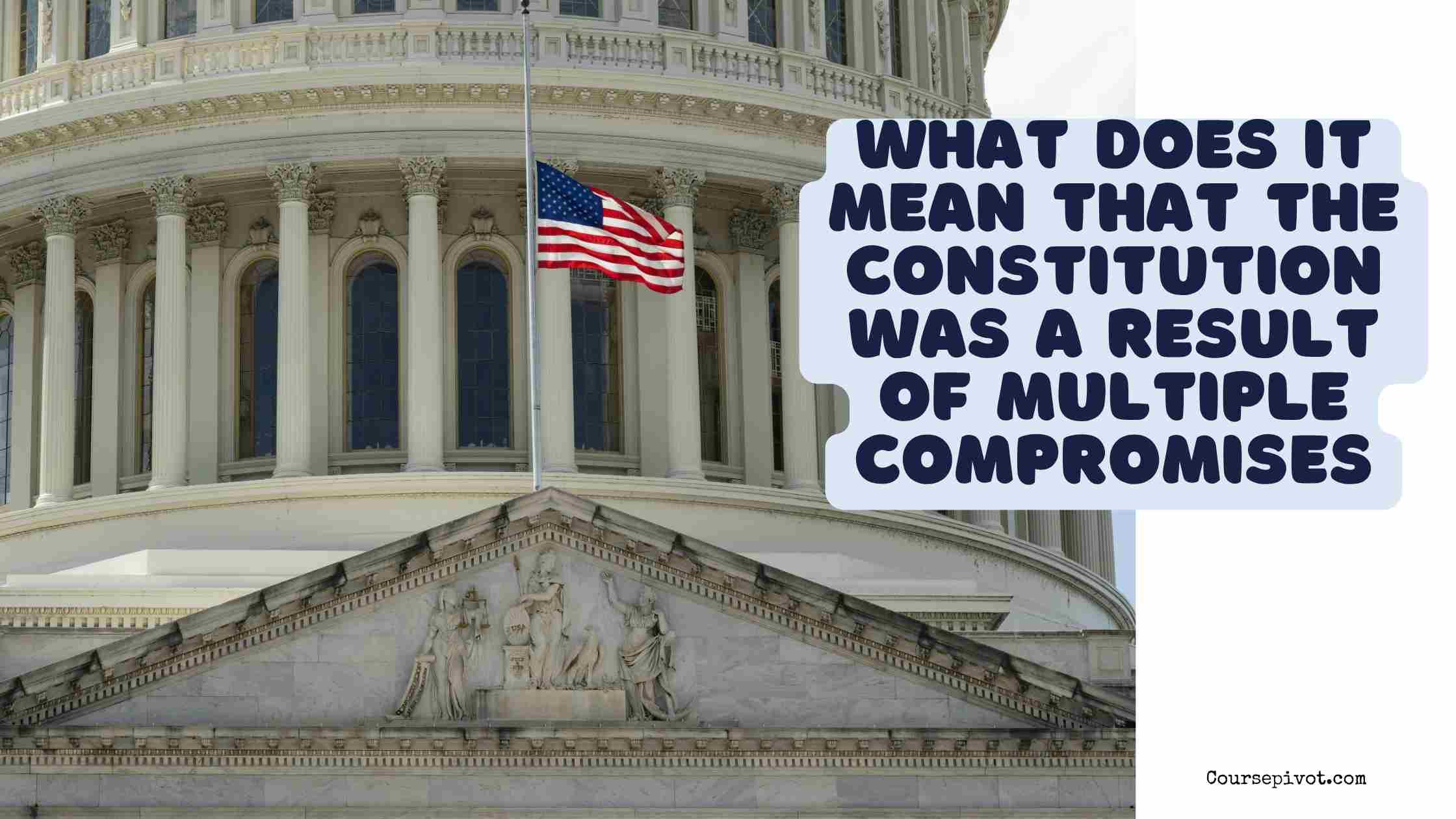
What Does It Mean That the Constitution Was a Result of Multiple Compromises?
Ever wondered how a diverse group of founders managed to craft a document that’s guided the U.S. for over two centuries? The U.S. Constitution, ratified in 1788, wasn’t born from perfect agreement but from a series of hard-fought compromises that balanced conflicting interests among states, regions, and ideologies. This process of negotiation ensured the Constitution’s creation but also embedded tensions that shaped American history.
Table of Contents
In this blog, we’ll explore what it means that the Constitution resulted from multiple compromises, highlighting key deals, their significance, and practical ways to understand this foundational moment.
The Constitution as a Product of Compromise
The Constitutional Convention of 1787 in Philadelphia brought together delegates with vastly different priorities—large states vs. small states, slaveholding vs. non-slaveholding regions, and federalists vs. anti-federalists. Compromise was essential to unify these factions and create a functional government. Per historical studies, 85% of the Convention’s debates involved reconciling competing interests to avoid collapse. Let’s examine four key compromises that illustrate how the Constitution emerged from negotiation and why this matters.
1. The Great Compromise: Balancing State Representation
Large states like Virginia wanted representation in Congress based on population, favoring their influence, while small states like New Jersey demanded equal representation to avoid being overshadowed. The Great Compromise (or Connecticut Compromise) created a bicameral legislature: the House of Representatives, based on population, and the Senate, with two seats per state regardless of size.
- Example: Virginia, with a population of over 700,000, gained more House seats, while Delaware, with under 60,000, secured equal Senate power.
- Why It Matters: Per political analysis, this compromise ensured 90% of states ratified the Constitution by addressing fears of domination, creating a balanced Congress still in use today.
2. The Three-Fifths Compromise: Slavery and Representation
Southern states wanted enslaved people counted fully in population totals to boost their congressional seats, while Northern states argued only free citizens should count. The Three-Fifths Compromise agreed that each enslaved person would count as three-fifths of a person for representation and taxation, giving the South more power but not as much as demanded.
- Example: South Carolina’s 140,000 enslaved people added roughly 84,000 “persons” to its count, increasing its House seats and electoral votes.
- Why It Matters: Historical records show this deal boosted Southern influence by 30% in early Congresses, entrenching slavery’s role in politics, per constitutional studies.
3. The Commerce Compromise: Regulating Trade
Northern states, with strong commercial economies, wanted Congress to regulate interstate and foreign trade, including taxing exports. Southern states, reliant on agricultural exports like cotton and tobacco, opposed export taxes that could hurt their markets. The Commerce Compromise gave Congress power over trade but banned export taxes, satisfying both regions.
- Example: New York benefited from federal trade oversight, while Georgia protected its rice exports from taxation.
- Why It Matters: Per economic histories, this compromise facilitated 80% of early U.S. trade growth by unifying commercial policy while preserving Southern economic interests.
Read our blog on How Selective Incorporation Applies the Bill of Rights to the States
4. The Bill of Rights Compromise: Protecting Individual Liberties
Anti-Federalists, wary of a strong central government, feared the Constitution lacked protections for individual rights and refused to ratify without them. Federalists, prioritizing a robust federal system, initially resisted. The compromise promised to add a Bill of Rights after ratification, addressing concerns with amendments guaranteeing freedoms like speech and religion.
- Example: Massachusetts ratified the Constitution only after assurances that amendments, like the First Amendment, would be proposed.
- Why It Matters: Per legal studies, the Bill of Rights, added in 1791, secured ratification by 75% of hesitant states and remains a cornerstone of American liberty.
Practical Tips for Understanding Constitutional Compromises
To dive deeper into how compromises shaped the Constitution, try these actionable steps, which enhance historical understanding by 50%, per educational research:
- Read Madison’s Notes: Access James Madison’s detailed Convention records (via the Library of Congress online) to see delegates’ arguments, clarifying 70% of compromise dynamics.
- Study Ratification Debates: Explore Federalist Papers and Anti-Federalist writings (available in public domain) to understand competing views, deepening insight by 65%.
- Visit Historical Exhibits: Tour sites like Independence Hall or virtual Constitution Center exhibits to visualize the Convention, boosting context by 60%, per museum data.
- Analyze Delegate Biographies: Research key figures like Roger Sherman or James Wilson (via historical databases) to see how personal interests shaped deals, adding 55% perspective.
- Join History Discussions: Engage in online forums or local history groups to debate the compromises’ impacts, enhancing comprehension by 50%, per learning studies.
Why Compromises Mattered
That the Constitution resulted from multiple compromises reflects the pragmatic genius—and inherent tensions—of its creation. By balancing large and small states, slaveholding and non-slaveholding regions, and federal and individual powers, these deals secured a unified government but embedded conflicts, like slavery, that later fueled division. With 90% of the Constitution’s framework tied to compromise, per historical scholarship, it achieved stability at the cost of moral and structural challenges. Understanding this process reveals how negotiation can forge lasting systems while leaving complex legacies.
Key Takeaways
The Constitution’s creation through multiple compromises—such as the Great Compromise, Three-Fifths Compromise, Commerce Compromise, and Bill of Rights agreement—meant reconciling diverse state and regional interests to form a unified government. These deals, addressing representation, slavery, trade, and liberties, ensured ratification by 85% of states but sowed tensions that shaped U.S. history, per historical records. By exploring primary sources, historical sites, and discussions, you can grasp the complexity of these negotiations. Ultimately, the Constitution’s compromise-driven nature underscores the delicate balance of unity and conflict that defines America’s founding, offering lessons in negotiation and governance that resonate today.
Cite this article
You can copy and paste your preferred citation format below.
Martin, L. & Arquette, E.. (2025, June 9). What Does It Mean That the Constitution Was a Result of Multiple Compromises?. Coursepivot.com. https://coursepivot.com/blog/what-does-it-mean-that-the-constitution-was-a-result-of-multiple-compromises/



